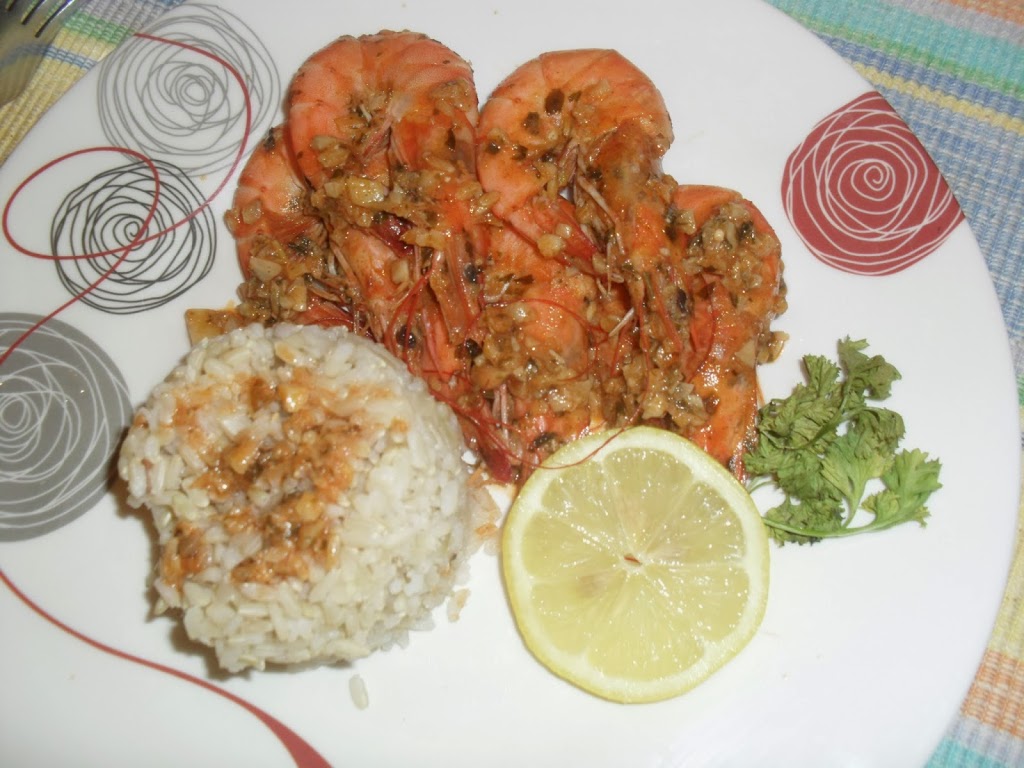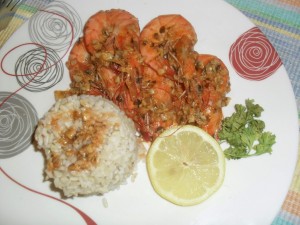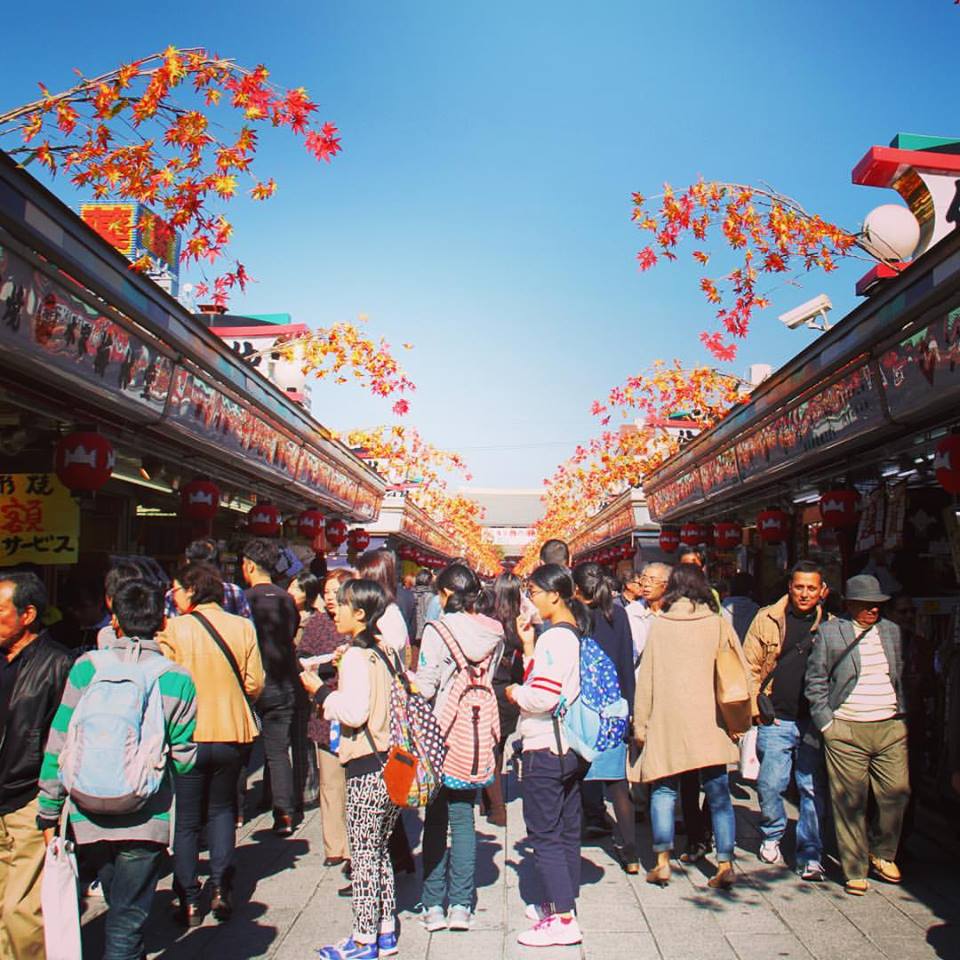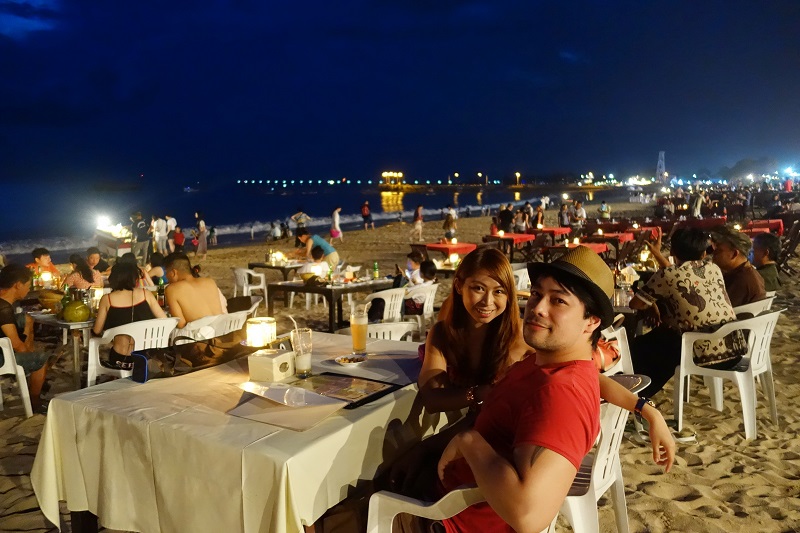I love shrimps! I will even go as far as saying that they are treasures of the sea. They are so versatile that you can eat them with mostly anything, and they taste good in any form or size. Because I love shrimps so much, I thought of cooking them for dinner.
At first, I was a bit reluctant to touch the greyish black uncooked shrimps because quite frankly, they looked like sea cockroaches.They’re both dark in color. They’ve got huge eyes, many pairs of legs, an exoskeleton, and antennae. They must be brothers from another mother! (Note: I was going to put a photo of an uncooked shrimp and a cockroach side by side for better visualization, but I don’t want to see a picture of a roach every time I scroll down my blog. I’m that scared of them!)
I blenched a little when I tried poking the head with a knife and it secreted a black and mustard-colored glob. Ugh! Nasty! However, I had to be brave and I really wanted to learn how to cook shrimps, so I carried on.
To peel or not to peel? That is the question.
First things first: you need to decide if you want to cook the shrimps with the shell intact or peeled off, that is, if you bought shrimps with the shell still on. I did, because it comes out as cheaper than the unpeeled ones.
I considered removing the outer cover first before cooking because they will be much easier to clean and devein (that is, taking out the black string that is actually the shrimp’s digestive track, but more on this later.) Also, I was cooking for someone else and it’s really much easier to eat shrimps without having to worry about peeling off the skin one by one.
However, I decided to just leave the shell on because doing so will allow the shrimps to retain and absorb the flavor more, making it much tastier. The only disadvantage here is that with the shell, they will be slightly harder to devein because you have to be extra careful when peeling it, and the vein is not so exposed. But don’t worry, it’s not as hard as you think. It gets easier after doing it many times. Another downside in leaving the shell on is that your guests or the people you are cooking for will have to exert more effort when eating your dish, but maybe that’s not so bad since you exerted all that effort in cooking for them anyway. Let the lazy bastards work for it!
Now, moving on…
How to prepare shrimps for cooking:
1. Defrost the frozen shrimps by submerging them in ice cold water for a few minutes. You may also add salt to the ice water.
2. When they are softer, cut a part of the shell just above the head in the middle until the black string becomes visible. (See photo below). This black string is… shrimp poop! (Blech!)
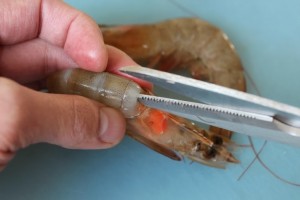 |
| Image source: burntlumpiablog.com |
3. Use a small pointed knife or a toothpick to pull out the vein gently and slowly. If it breaks, just continue pulling out the rest of it. If you don’t get all of it, it’s fine. Just get whatever you can. Some cultures eat the whole shrimp, including the vein, and nobody has ever died from it. So chill.
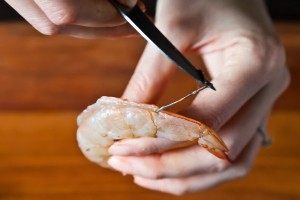 |
| Image source: food52.com |
Ingredients:
3-4 tablespoons of butter
3 cloves of garlic, minced
4 tablespoons of parsley, chopped
500g of frozen prawns, unpeeled
1 cup of lemon juice
4 tablespoons of white wine
1-2 tablespoons of salt and pepper
Procedure:
1. Heat the butter in a large frying pan until it melts.
2. Throw in the parsley and garlic and cook for about 30-60 seconds
3. Add prawns to the pan and cook until they turn orange. Do not overcook, as the shell will stick to the body and will be harder to peel.
4. Add lemon juice, white wine, salt, and pepper. Stir to evenly distribute the juices and seasonings.
How simple is that? Now, I normally don’t eat much of my own cooking but this one, I couldn’t help myself!
Recipe inspiration: http://allrecipes.co.uk/recipe/31517/lemon-and-garlic-prawns.aspx

